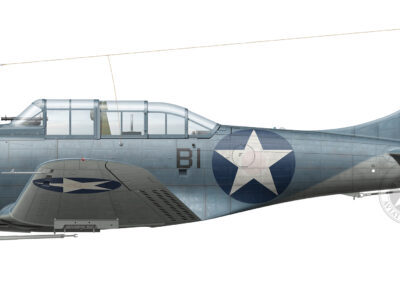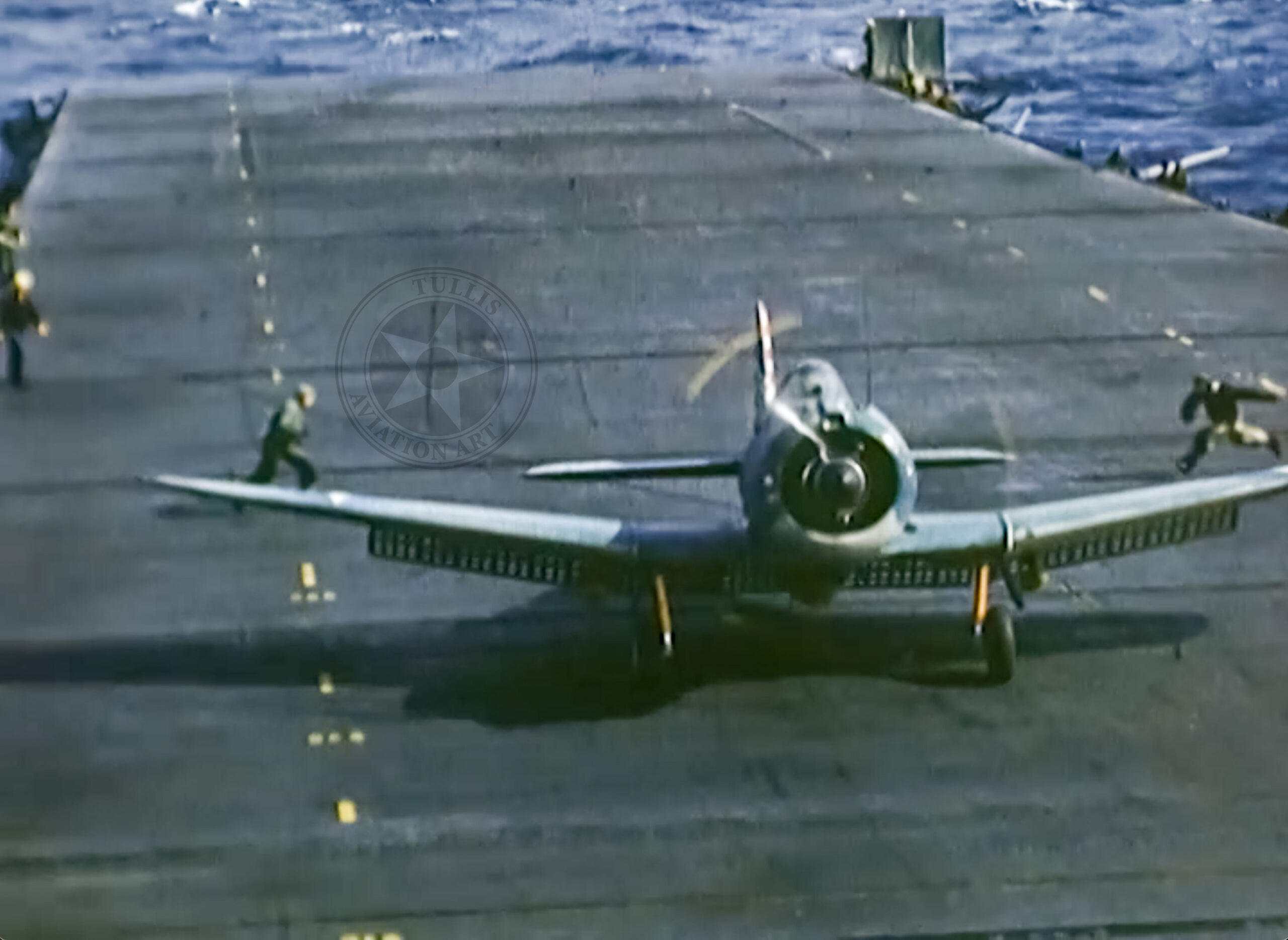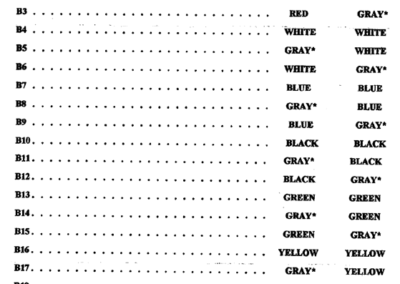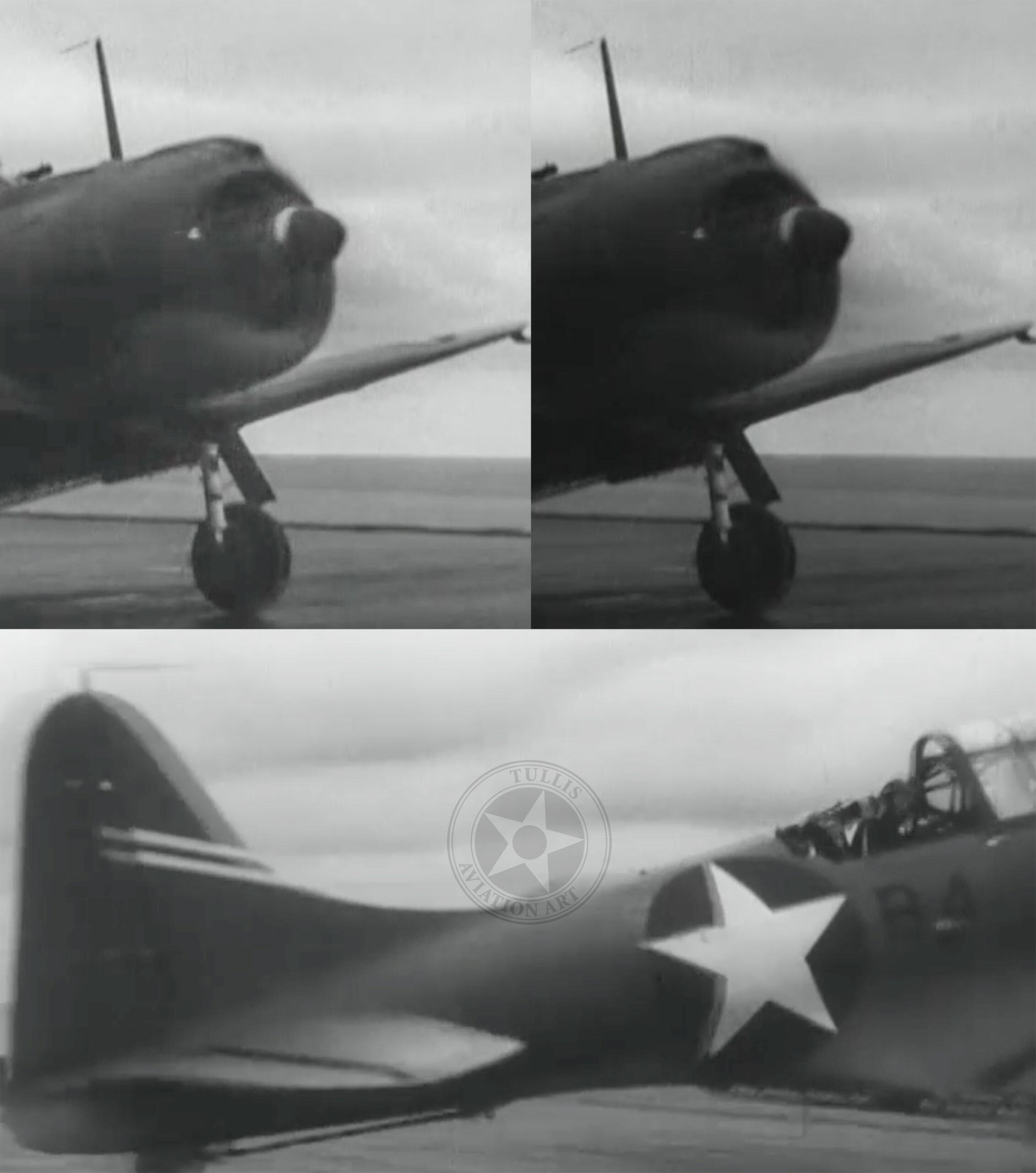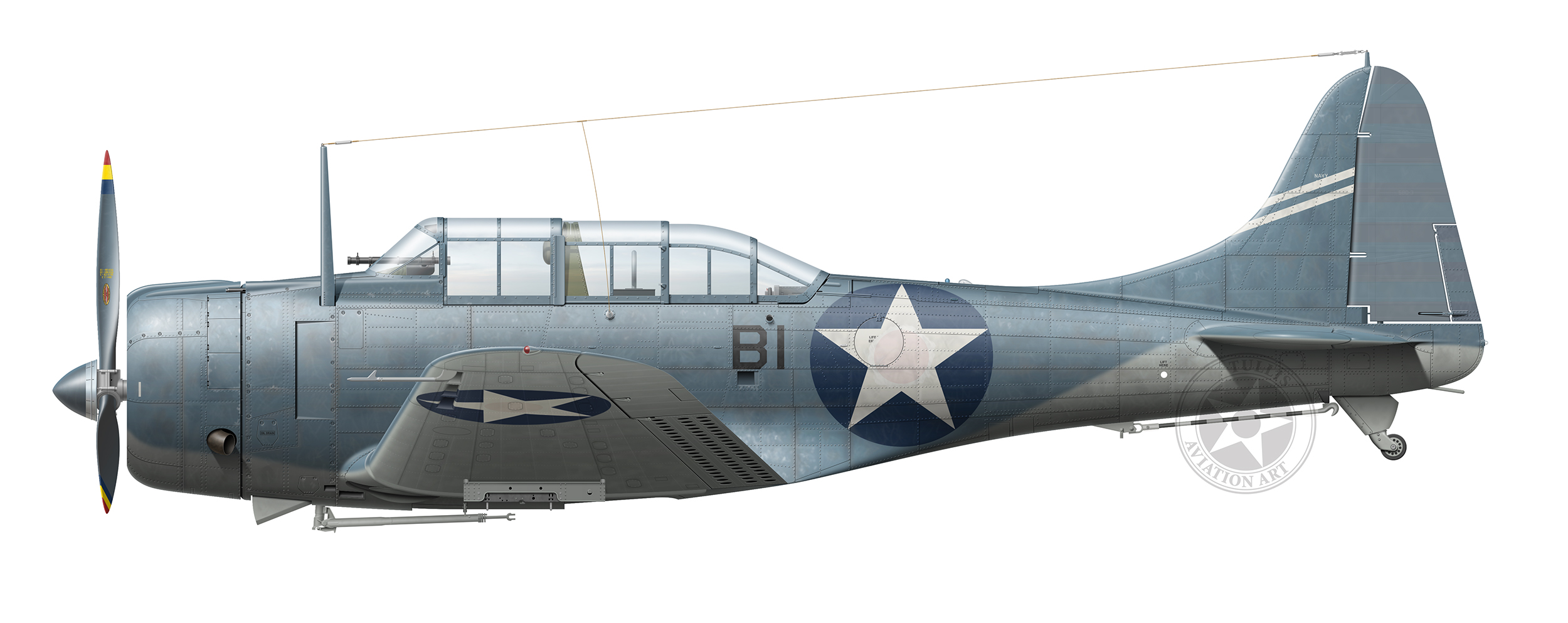
SBD-3 BuNo 4687, Lt. Richard H. ‘Dick’ Best and Chief Radioman James F. Murray, Bombing Six, USS Enterprise (CV6), June 4, 1942.
Dick Best was the commanding officer of VB-6, USS Enterprise, during the Battle of Midway. Best flew B1 on two missions on June 4th, and scored successful bombing hits on two carriers that day (one of only two pilots in history to do so.) For the first sortie, he led his squadron following Cdr. Wade McClusky, Commander of the Enterprise Air Group, leading VS-6. When McClusky located the Japanese fleet, he led VS-6 in diving on the nearest carrier, the Kaga, which did not follow U.S. Navy dive bombing doctrine which dictated that the first squadron was to attack the furthest carrier, and the trailing squadron taking the nearest carrier (this was done so that both squadron’s attacks would occur near simultaneously, thus splitting up the defending air patrol and making it less effective in repelling the attack.) McClusky’s squadron was at a higher altitude than Best’s VB-6, and when Best saw VS-6 aircraft diving past his squadron and realized that McClusky was not going after the furthest carrier, he and the two other aircraft from his section broke off their attack and proceeded to the second carrier, the Akagi (the remainder of VB-6 continued their dive on Kaga along with McClusky’s VS-6.) Best’s section then dove on the Akagi, the other two aircraft’s bombs missed their target, but Best’s bomb hit the ship which erupted in an out of control fire, dooming it. Later that day, Best and other pilots from VB-3, VB-6, and VS-6 went out to sink the one remaining Japanese carrier, the Hiryu, with Best and several other pilots scoring hits ensuring its destruction. During the first sortie, Best’s oxygen bottle was faulty and he inhaled caustic soda which activated latent tuberculosis. After Dick returned from his second sortie, he began coughing up blood and was subsequently hospitalized until 1944, ending his career as a naval aviator.
Personal note: I would like to point out something about the portrayal of Dick in the 2019 Midway movie. I do enjoy this movie very much (hey, getting a new WWII movie is always a great thing), and am grateful that it introduced millions of people to Dick Best and his accomplishments in the Battle of Midway who might have never heard of him otherwise. That said, it needs to be stated that Dick was NOTHING like the character written for the movie. Dick was the quintessential example of a professional aviator, and would have never endangered his crew or plane with a stunt like that depicted in the beginning of the film or behaved like Maverick from Top Gun as written in the script. As a researcher, I have other issues with details in the movie (A6Ms and mountains depicted for the Marshall Island attack, no F4Fs shown, etc.) but can forgive these as it is a piece of entertainment, not a documentary. Dick being portrayed so incredibly out of character is something that is not so easily dismissed.
Profile notes:
B1 had a black spinner, not blue as some published profile illustrations have shown. Color film footage of Bombing Six aircraft from a few weeks prior to the Battle of Midway clearly shows a black spinner. In addition to this piece of film, black and white photos of other Bombing Six and Scouting Six aircraft from June of 1942 clearly show spinners that are darker than the Insignia Blue of the national insignia. Finally, Best confirmed his aircraft had a black spinner to me back in the early 1990s, and also to researcher Kent Walters via a signed paper documenting both the spinner and landing gear colors (see next paragraph.) This paper was posted on the Battle of Midway Roundtable website (http://www.midway42.org/Backissues/2022/20220101.aspx) January 2022 newsletter, and is attached below.
Best’s Dauntless had both main landing gear painted red. Fans of the ‘yellow wings’ era will recall how the cowls of aircraft were painted in section colors, and that same practice was used for Enterprise’s SBDs as well, but now on the landing gear struts instead of the forward cowling. Dick confirmed this practice in a full typed list provided to researcher Kent Walters (signed by Best) and a copy is included below in the gallery (source:http://www.midway42.org/Backissues/2022/20220101.aspx).
As Best’s aircraft had the earlier red and white rudder stripes and roundel center dots painted out by June 4th, I have elected to show them faintly bleeding through the overpainting as this effect is documented on other SBDs.
Finally, for the ‘1’ on the forward cowl, both VB-6 and VS-6 used 4″ numbers, this is confirmed in film footage of SBDs launching from Enterprise prior to the Battle of Midway (see blog post HERE.) Prior to Feb. 1942, Scouting Six used white numbers, while Bombing Six had black. This film linked below shows a Bombing Six SBD (B-4) at the 1:24 minute mark that also appears to show a white number on the cowl: https://catalog.archives.gov/id/76520 Still images from the film of B-4 and B-16 with white cowl numbers are included in the gallery below. It appears that VB-6 switched to white cowl numbers between February 1942 and the time that the red/white rudder stripes and red center dots on the national insignia were dropped in late April.
Navy Cross citation:
The President of the United States of America takes pleasure in presenting the Navy Cross to Lieutenant Commander Richard Halsey Best (NSN: 0-71601), United States Navy, for extraordinary heroism in operations against the enemy while serving as Pilot of a carrier-based Navy Dive Bomber and Squadron Commander in Bombing Squadron SIX (VB-6), attached to the U.S.S. ENTERPRISE (CV-6), during the “Air Battle of Midway,” against enemy Japanese forces on 4 – 6 June 1942. Defying extreme danger from concentrated anti-aircraft barrage and powerful fighter opposition, Lieutenant Commander Best, with bold determination and courageous zeal, led his squadron in dive-bombing assaults against Japanese naval units. Flying at a distance from his own forces which rendered return unlikely because of probable fuel exhaustion, he pressed home his attacks with extreme disregard for his own personal safety. His gallant intrepidity and loyal devotion to duty contributed greatly to the success of our forces and were in keeping with the highest traditions of the United States Naval Service.
BoM 80th Anniversary blog post.
Click the gallery thumbnail below for a larger view of this aircraft.
Section colors document ©Kent Walters via the Battle of Midway Roundtable group: http://www.midway42.org/Backissues/2022/20220101.aspx
Recommended books:
No Right To Win: A Continuing Dialogue with Veterans of the Battle of Midway
A Glorious Page in Our History: The Battle of Midway, 4-6 June 1942
Incredible Victory: The Battle of Midway
Shattered Sword: The Untold Story of the Battle of Midway
(As an Amazon Associate I earn from qualifying purchases)
